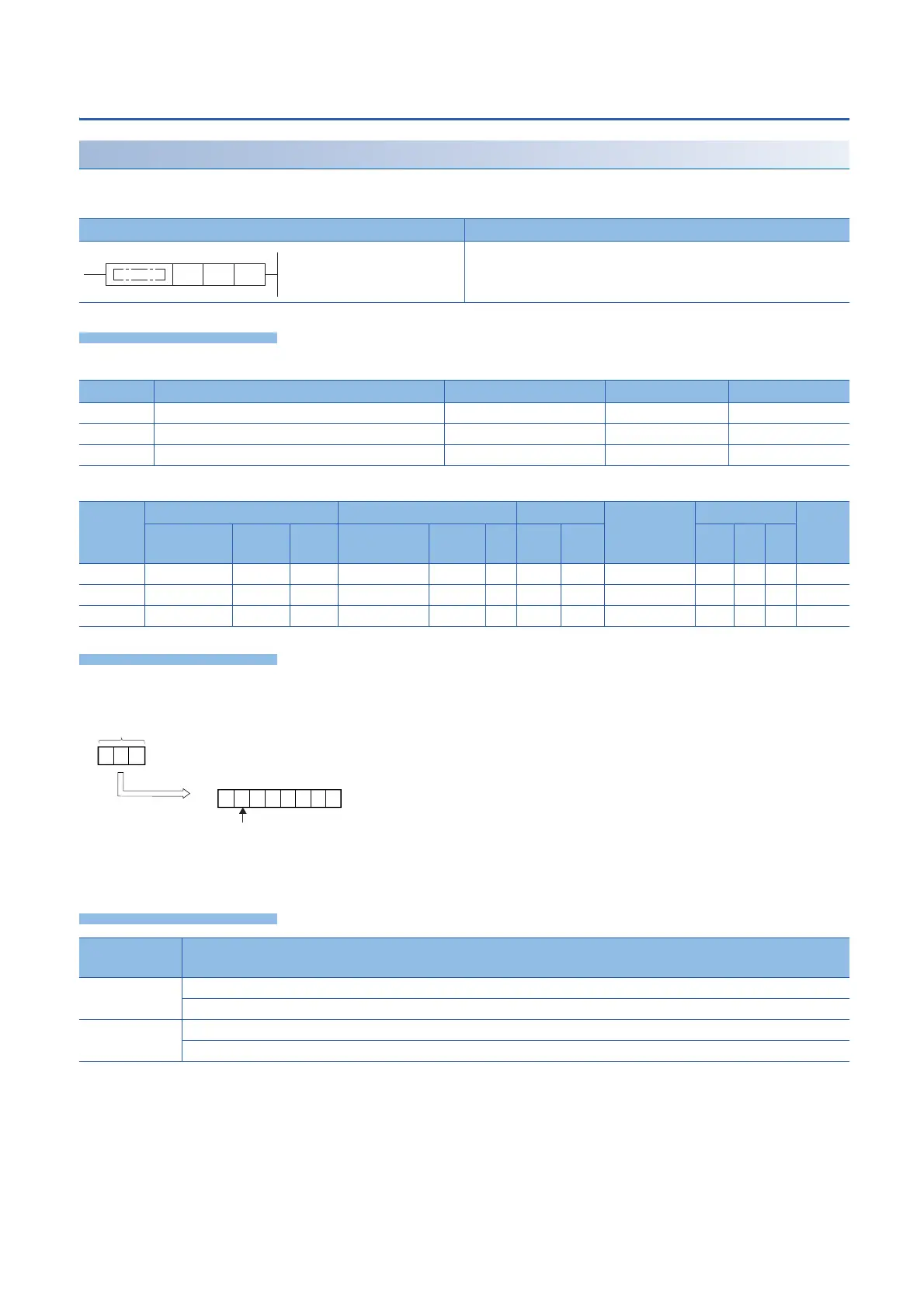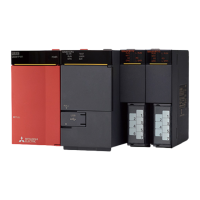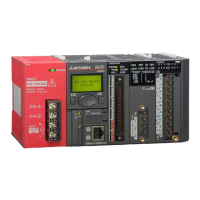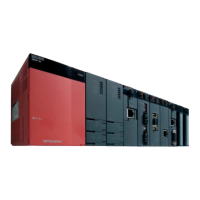284
6 BASIC INSTRUCTIONS
6.5 Data Conversion Instructions
Decoding from 8 to 256 bits
DECO(P)
These instructions decode the lower-order (n) bits of the device specified by (s), and store the result in the 2 (to the power (n))
bit from the device specified by (d).
■Descriptions, ranges, and data types
■Applicable devices
• These instructions turn ON the bit position of the device specified by (d) in correspondence to the BIN value specified by
the lower-order (n) bits of (s).
• When (n) is 0, no processing is performed, and the contents of the device specified by (d) do not change.
• The bit device is handled as a device storing one-bit data and the word device is handled as a device storing 16-bit data.
Ladder diagram Structured text
ENO:=DECO(EN,s,n,d);
ENO:=DECOP(EN,s,n,d);
Operand Description Range Data type Data type (label)
(s) Decode data or device number for storing the decode data Bit/16-bit signed binary ANY_ELEMENTARY
(d) Head device for storing the decode result Bit/word ANY_ELEMENTARY
(n) Valid bit length 1 to 8 16-bit unsigned binary ANY16
Operand Bit Word Double word Indirect
specification
Constant Others
X, Y, M, L,
SM, F, B, SB
U\G T, ST,
C, LC
T, ST, C, D,
W, SD, SW, R
U\G Z LC LZ K, H E $
(s)
(d)
(n)
Error code
(SD0/SD8067)
Description
2820 The device specified by (s) exceeds the corresponding device range.
The device specified by (d) exceeds the corresponding device range.
3401 (d) is specified as a bit device and (n) is other than 0 to 8.
(d) is specified as a word device and (n) is other than 0 to 4.
7
01
ON
000000
110
6543210
n=3
(d)
(s)
(Binary value = 6)

